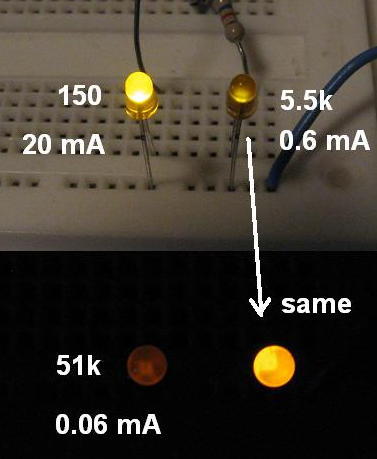BTW, are you sure you have a 5.5k resistor? That's a somewhat unusual value to have just lying around...

Your LED will light up with 5.5k ohm. I don't have your exact DigiKey LED, but in above photo using a 5V supply and 150 ohm resistor, a similar LED is driven at 0.02 Amps or 20 mA (milli-Amps). 20 mA is a standard test current for this type of LED.
Next to it is the same LED with 5.5k ohm. The current is about 0.6 mA and I suppose you could say it's lit up. Photos are kind of tricky but it is quite dim and I'd say not usable in a train application like a marker light or whatever. LEDs have an interesting property where the intensity is exactly proportional to the current...it's all about electrons flowing, so double the current, double the light. The current in the left LED is about 35 times more than the right LED so it is 35 times brighter. Kind of hard to gauge this difference with your eyeball.
Then, in the bottom photo I changed the resistor to drop the current in the left LED to only 0.06 mA. I had to turn off the room light to take the photo but now your dim 5.5k ohm LED almsot seems like a searchlight as it is 10 times brighter (0.06 mA vs. 0.6 mA). It's all relative and the human eye is remarkably sensitive.




